News
COVID-19 Vaccination in India to Open for All Aged Above 18 Years in 3rd Phase: Govt
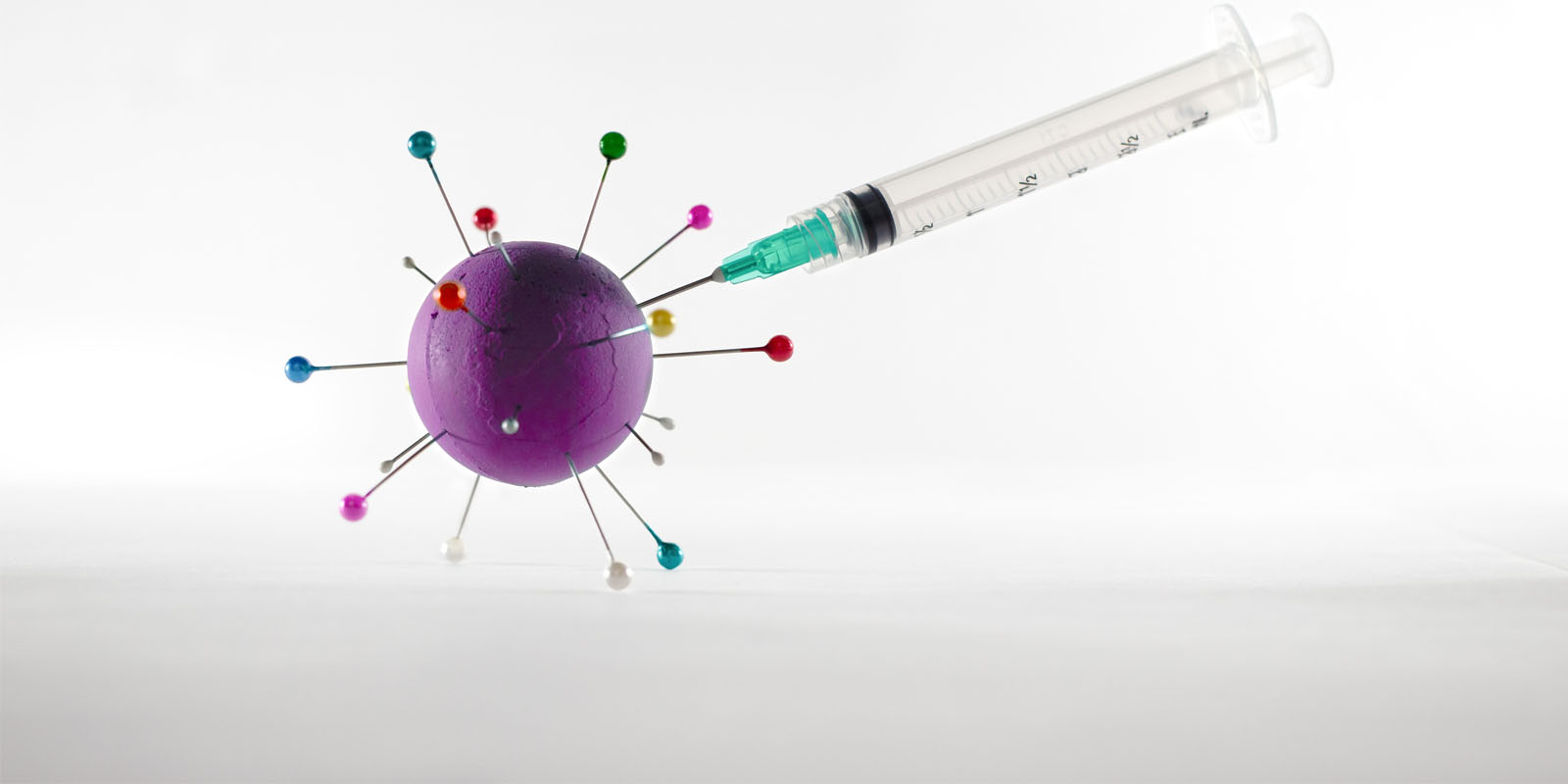
New Delhi-From May 1, 2021, everyone above the age of 18 would be eligible to receive COVID-19 vaccination, the Government of India decided today. As per the government, the decision has been taken as a good amount of coverage of vulnerable groups is expected by 30th April.
Pertinent to mention that a demand was being raised to open vaccination for all amid the peaking second wave of the pandemic which is proving to be deadlier than the first one. On Sunday, former Prime Minister of India, Manmohan Singh, had also written to Prime Minister Narender Modi to be more flexible in deciding eligibility for vaccination as it was the only hope. He had pointed out that when we look at the percentage of population instead of the absolute numbers, we see that only a small fraction has been covered so far. He had also suggested reworking on the current model adopted by the government.
Singh had asked the Prime Minister to allow states to define who qualifies as a ‘frontline worker’. Many states wanted to designate bus and taxi drivers, school teachers, municipal and panchayat staff, and even lawyers as frontline workers to make them eligible for vaccination even if they are below the requisite 45 years of age.
Phase-I of the National Covid-19 Vaccination Strategy was launched on 16th January 2021, prioritizing vaccination of Health Care Workers (HCWs) and Front Line Workers (FLWs). Phase-II was initiated from 1st March 2021, focusing on the most vulnerable i.e. all people above 45 years of age, accounting for more than 80% of Covid mortality in the country. The private sector was also roped in to augment capacity.
So far, Emergency Use Authorisation has been granted to two indigenously manufactured vaccines (Serum Institute of India and Bharat Biotech), and a third vaccine (Sputnik) that while presently manufactured abroad will eventually be manufactured in India, the GoI said.
The government said that in its Phase-III, the National Vaccine Strategy aims at liberalised vaccine pricing and scaling up of vaccine coverage, the GoI said. This would augment vaccine production as well as availability, incentivising vaccine manufacturers to rapidly ramp up their production as well as attract new vaccine manufacturers, domestic and international. It would also make pricing, procurement, eligibility and administration of vaccines open and flexible, allowing all stakeholders the flexibility to customise to local needs and dynamics, the GoI said.
The main elements of the Phase 3 Strategy of the National Covid-19 Vaccination program that would come in effect from 1st May 2021
(i) Vaccine manufacturers would supply 50% of their monthly Central Drugs Laboratory (CDL) released doses to Govt. of India and would be free to supply the remaining 50% doses to State Govts. and in the open market (hereinafter referred to as other than Govt. of India channel).
(ii) Manufacturers would transparently make an advance declaration of the price for 50% supply that would be available to State Govts. and in the open market, before 1st May 2021. Based on this price, State governments, private hospitals, industrial establishments etc would be able to procure vaccine doses from the manufacturers. Private Hospitals would have to procure their supplies of Covid-19 vaccine exclusively from the 50% supply earmarked for other than Govt. of India channel. Private Vaccination providers shall transparently declare their self-set vaccination price. The eligibility through this channel would be opened up to all adults, i.e. everyone above the age of 18.
(iii) Vaccination will continue as before in Govt. of India vaccination centres, provided free of cost to the eligible population as defined earlier i.e. Health Care Workers (HCWs), Front Line Workers (FLWs) and all people above 45 years of age.
(iv) All vaccination (through Govt. of India and Other than Govt. of India channel) would be part of the National Vaccination Programme, and mandated to follow all protocol such as being captured on CoWIN platform, linked to AEFI reporting and all other prescribed norms. Stocks and price per vaccination applicable in all vaccination centres will also have to be reported in real-time.
(v) The division of vaccine supply 50% to Govt. of India and 50% to other than Govt. of India channel would be applicable uniformly across for all vaccines manufactured in the country. However, the Government of India will allow the imported fully ready to use vaccines to be entirely utilized in the other than Govt. of India channel.
(vi) Govt. of India, from its share, will allocate vaccines to States/UTs based on the criteria of extent of infection (number of active Covid cases) & performance (speed of administration). Wastage of vaccine will also be considered in this criterion and will affect the criteria negatively. Based on the above criteria, State-wise quota would be decided and communicated to the States adequately in advance.
(vii) The Second dose of all existing priority groups i.e. HCWs, FLWs and population above 45 years, wherever it has become due, would be given priority, for which a specific and focused strategy would be communicated to all stakeholders.
(viii) This policy would come into effect from 1st May 2021 and will be reviewed from time to time.
Feature Photo: ivvndiaz/unsplash
News
HP Govt Employees to Get Higher Pay Scale on Completion of Two Years of Service: CM Jairam
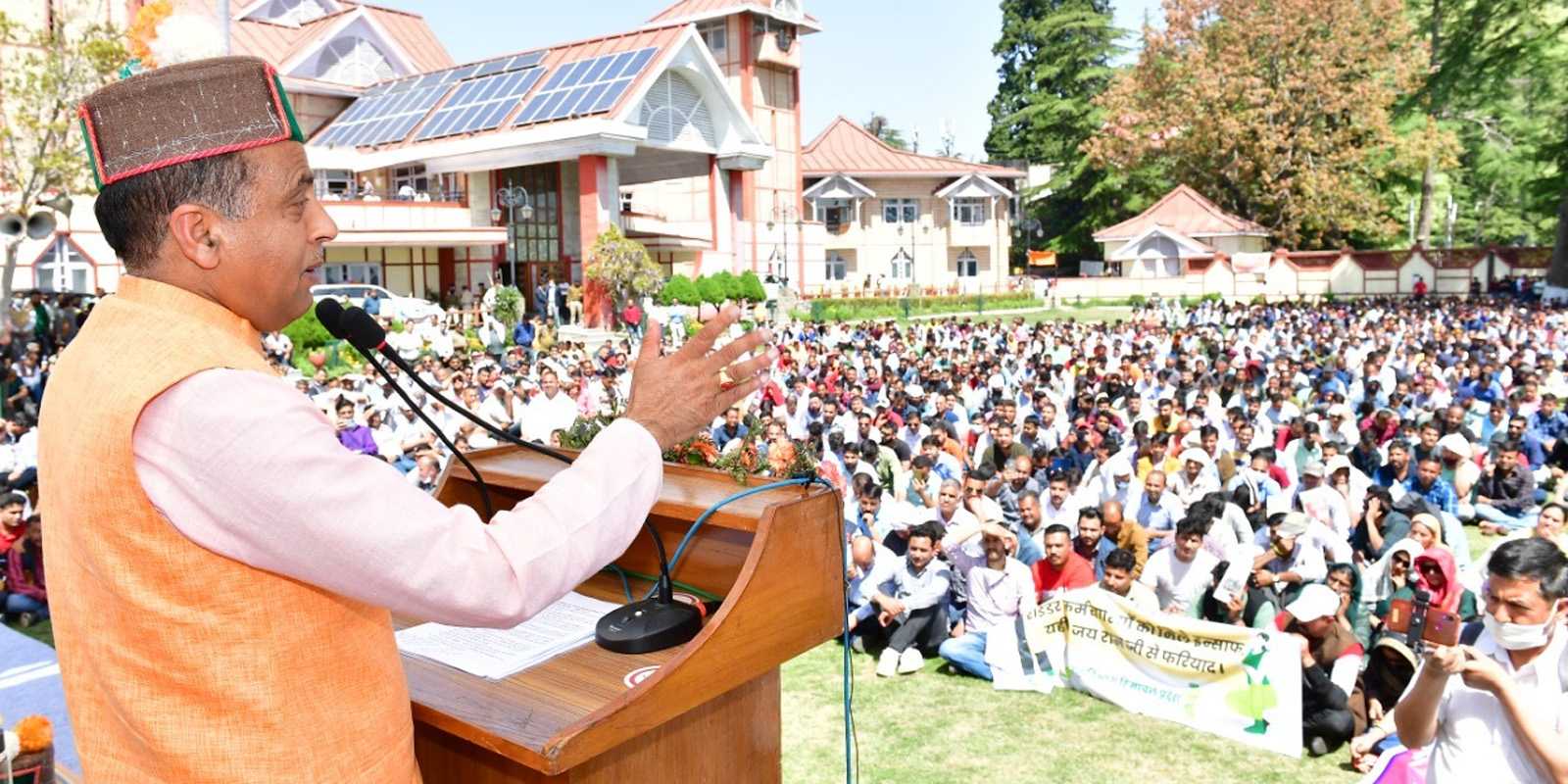
Shimla-Himachal Pradesh Government employees working in different departments before January 3, 2022, would be given a higher scale at par with other employees on completion of two years tenure of regular service. A higher pay scale was also announced for the Junior Office Assistants (IT) on completion of two years of regular service.
Chief Minister Jairam Thakur made these announcements during the Karamchari Maha Sammelan of the Himachal Pradesh Non-Gazetted Employees Federation at the hotel Peterhof on Sunday.
He appreciated the role played by the employee especially frontline workers in the battle against the pandemic.
He said most of the government employees in the state have been given revised pay scales and on average, every employee has got the benefit of a 12 to 15 percent salary hike. There has also been an increase in the pension of about 1.50 lakh pensioners of the state. The financial benefits of Rs. 7801 crore have been given to state government employees and pensioners from the year 2018 to 2022. The pensioners who retired before 2016 are getting the benefit of a 15 to 20 percent increase in the pension while around 40 thousand pensioners who retired after 2016 would be benefitted soon, he said.
He said the daily wages were Rs. 210 in the year 2017 which has been increased by the present state government to Rs. 350. Similarly, 12 per cent interim relief annually has been provided to government employees and pensioners during the present government’s tenure. He said the Himachal government has provided Dearness Allowance to its employees and pensioners on the lines of Punjab and Central governments from the due date. The Punjab government has given only 5 percent interim relief to the employees while the Himachal government has provided 21 percent interim relief to its employees.
“Out of the total interim relief amount given to the employees and pensioners amounting to about Rs. 6500 crore, Rs. 3500 crore has been paid during the tenure of our government” added the Chief Minister.
He said that the state government has increased the government contribution for NPS employees from 10 percent to 14 percent benefitting more than one lakh employees. The NPS employees are being given the benefits of retirement and death gratuity at par with employees falling under the old pension scheme. The government has also increased the upper limit of death gratuity from Rs. 10 lakh to Rs. 20 lakh.
The Chief Minister said the state government has also increased the honorarium of para-workers working in various departments. The salary of outsource workers has been hiked by Rs 1,500 per month.
Non-Gazetted Employees Federation President Ashwani Thakur thanked the Chief Minister for providing various financial and other benefits to different categories of government employees.
Nation
Most Covid Restrictions to be Lifted From March 31, Mask and Hand Hygiene to Continue

New Delhi-The Centre has issued a notification to the States informing that the provisions of the Disaster Management (DM) Act, 2005 will not be invoked in the country after March 31. The Union Health Ministry said that the use of face masks and following hand hygiene will continue.
It implies that most of the Covid-related rules and restrictions would end.
Union Home Secretary Ajay Bhalla issued the notification which said that the decision was taken following the overall improvement in the situation and the preparedness of the government in dealing with the COVID-19 pandemic.
However, local authorities and State police can still invoke fines and criminal cases against persons violating COVID-19 norms under the Indian Penal Code (IPC), a senior government official said.
The DM Act was invoked on March 24, 2020, due to the pandemic
“Over the last seven weeks or so there has been a steep decline in the number of cases. The total caseload in the country stands at 23,913 only and the daily positivity rate has declined to 0.28%. It is also worth mentioning that with the combined efforts, a total of 181.56 Cr vaccine doses have been administered,” the notification said.
“I would like to mention that in view of the nature of the disease, we still need to remain watchful of the situation. Wherever any surge in the number of cases is observed, the States/UTs may consider taking prompt and proactive action at a local level, as advised by MoHFW (Health Ministry) from time to time,” the notification said.
The Indian government had issued various guidelines and measures for the first time on March 24, 2020, under the Disaster Management Act to curb the COVID-19 situation in the country, which have been modified several times thereafter.
India currently has 23,087 active COVID-19 cases and recorded 1,778 new cases and 62 deaths in the last 24 hours. The daily positivity rate has also declined to 0.28%.
News
HP Cabinet Decisions: Country Liquor Made Cheaper in New Excise Policy, Read All Decisions
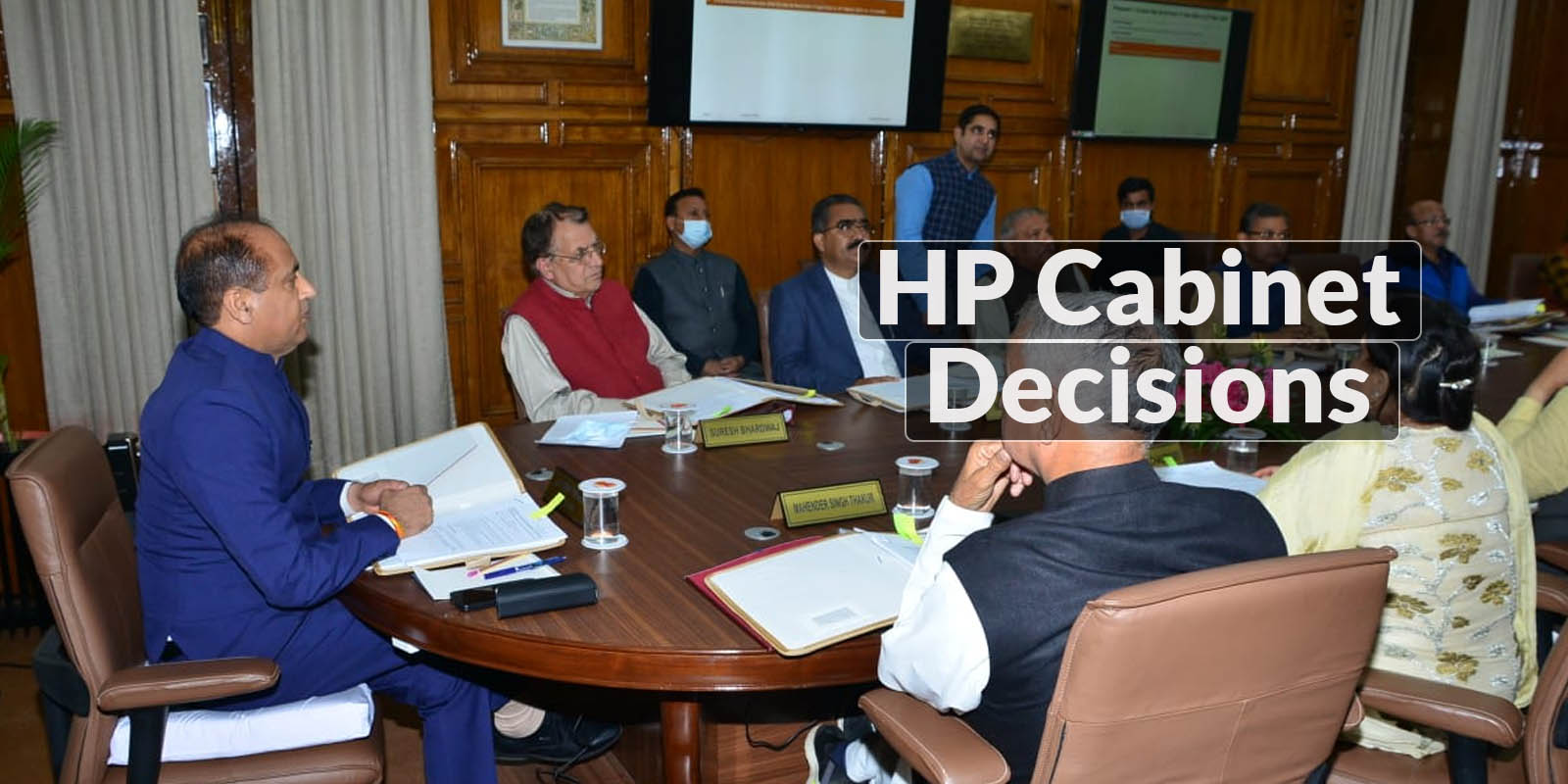
Shimla-A meeting of the Himachal Pradesh Cabinet was held on March 20, 2022, under the chairmanship of Chief Minister Jai Ram Thakur.
The excise policy for the financial year 2022-23 was approved. Approval was also given for the renewal of retail excise vends in the state for the financial year 2022-23 at the renewal fees of 4% of the value of unit/vend.
The State Government said that wants to enhance the government revenue and curb the smuggling of country liquor from the neighbouring states by a reduction in its price.
The brands of Country Liquor will be cheaper as license fees have been reduced. This will help in providing good quality liquor at a cheaper rate to the consumers.
In the new excise policy, the 15% fixed quota of country liquor for manufacturers and bottlers to be supplied to the retail licensees has been abolished. According to the government, this step will give the retail licensees to lift their quota from the suppliers of their choice and further assure the supply of good quality country liquor at competitive prices. The MRP of country liquor will be cheaper by 16% of the existing price.
In this year’s policy, the Gaudhan Vikas Nidhi Fund has been enhanced by Re.1/- from the existing Rs.1.50 to Rs.2.50.
The fixed annual license fee of Bars has been rationalized by abolishing the area-specific slabs of license fee. Now throughout the State, there will be uniform license slabs based upon the room capacity in hotels.
Rates of the annual fixed license fee of Bars in the tribal areas has been reduced considerably.
Further, all the above stakeholders will have to install CCTV cameras at their establishments as it was made mandatory for them.
Wholesale vends and retail vends, the penalty provisions under the H.P. Excise Act, 2011 have been made more stringent.
An end to end online Excise Administration System would be established in Himachal Pradesh, the government said.
HP Government estimates a collection of Rs 2131 crore revenue during the year, which will be Rs. 264 crores higher than the financial year 2021-22 – growth of 14% in state excise revenues.
The Cabinet also gave its nod to amend Himachal Pradesh Disaster Relief Manual-2012 to include deaths due to biting of honey bees, hornet and wasps, accidental drowning and deaths due to accidents of vehicles (including land, water and air) under this Manual.
The Cabinet gave its approval for filling up 11 posts of ‘A’ Class Tehsildar in Revenue Department through direct recruitment on regular basis through Himachal Pradesh Public Service Commission.
HP State Toll Policy 2022-23
The HP Cabinet also gave its nod to HP State Toll Policy for the year 2022-23 which envisages auction cum tender for all the toll barriers in the State. During the year 2021-22, toll revenue has registered a growth of 20 percent of the previous year’s revenue.


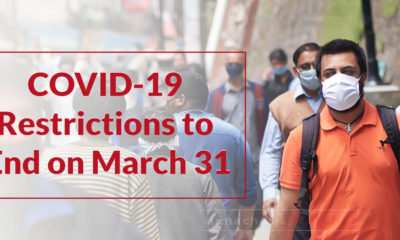

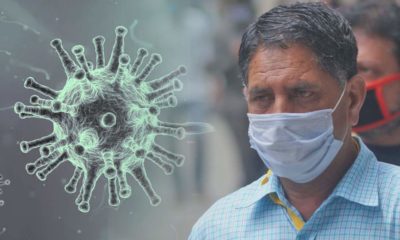

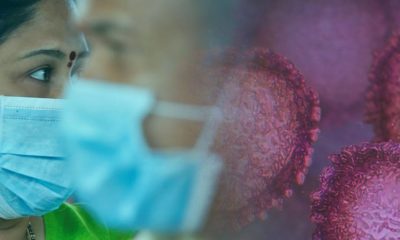






 Home Decor Ideas 2020
Home Decor Ideas 2020
